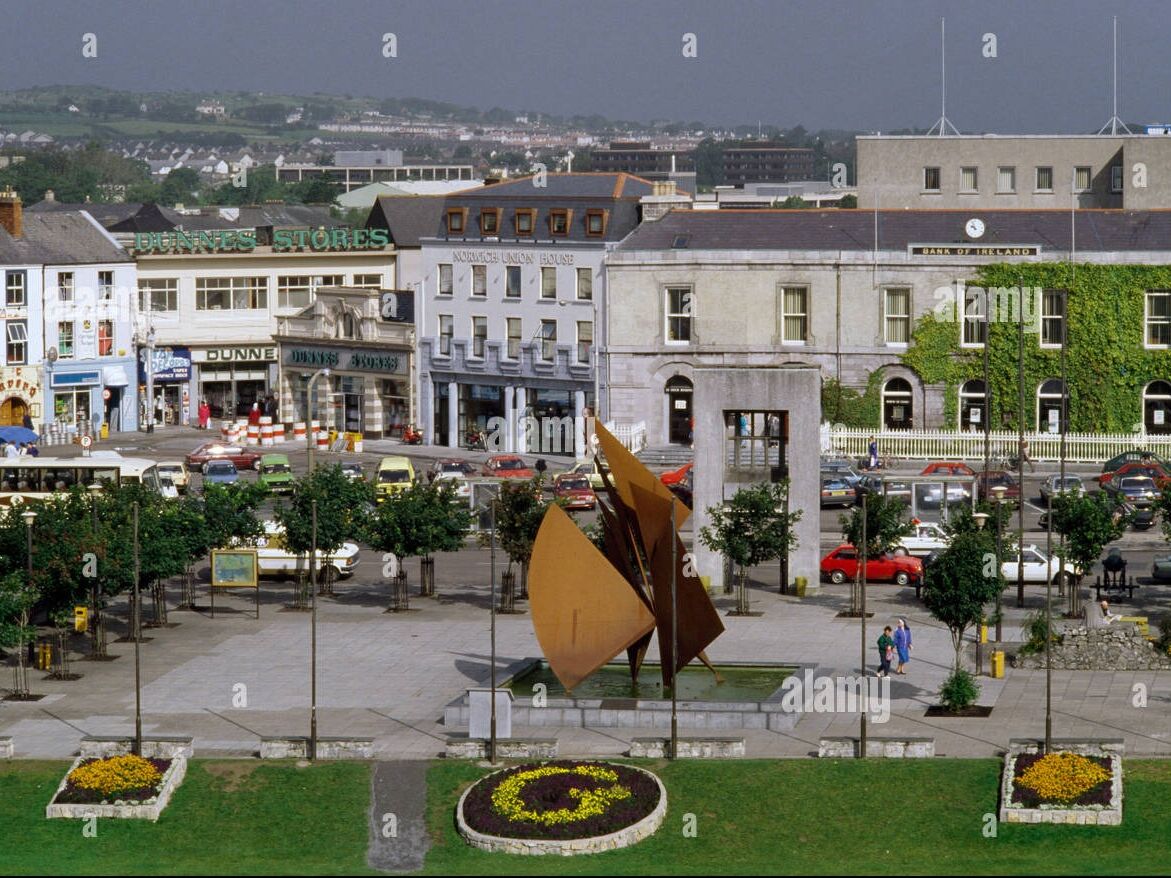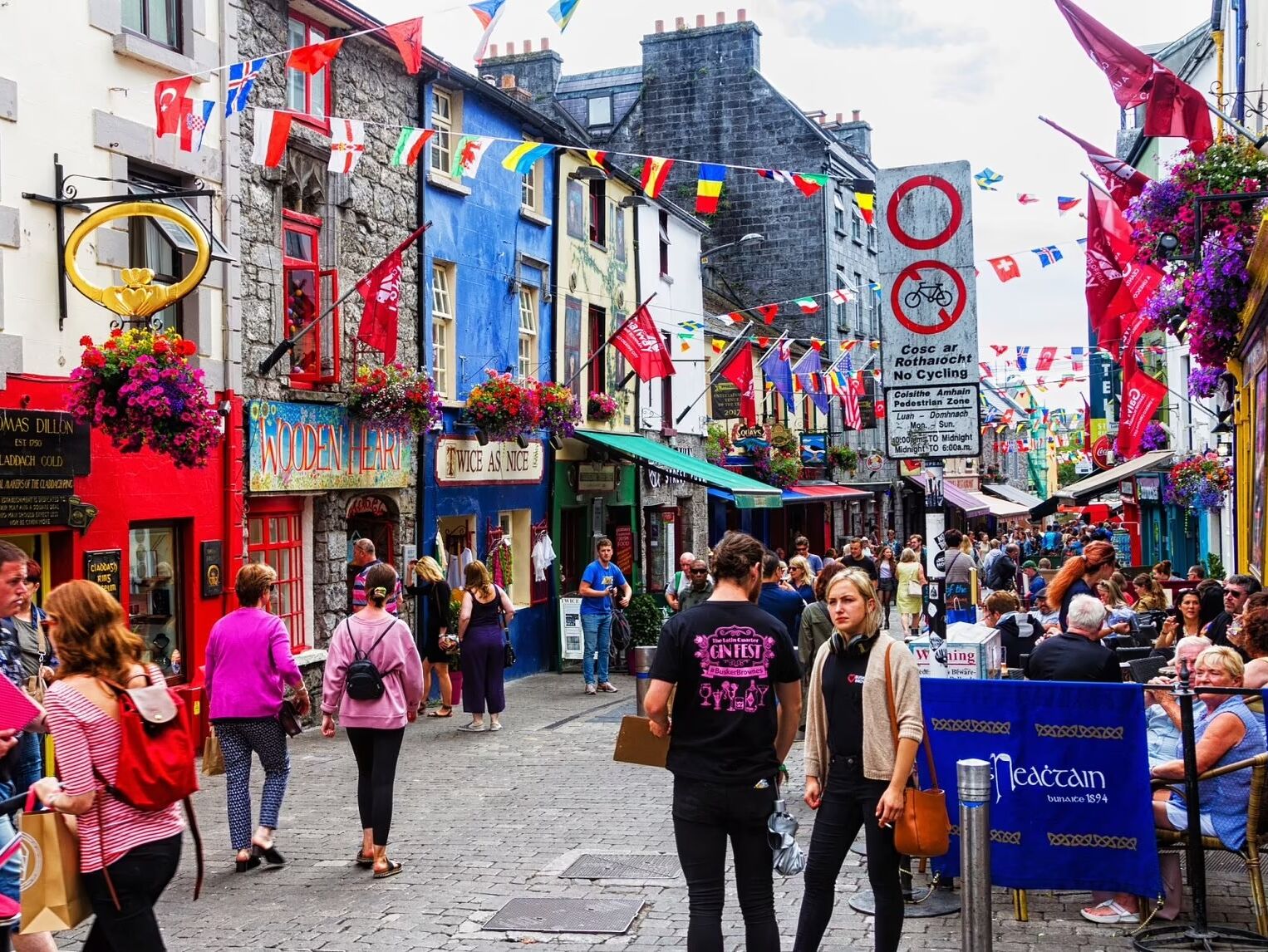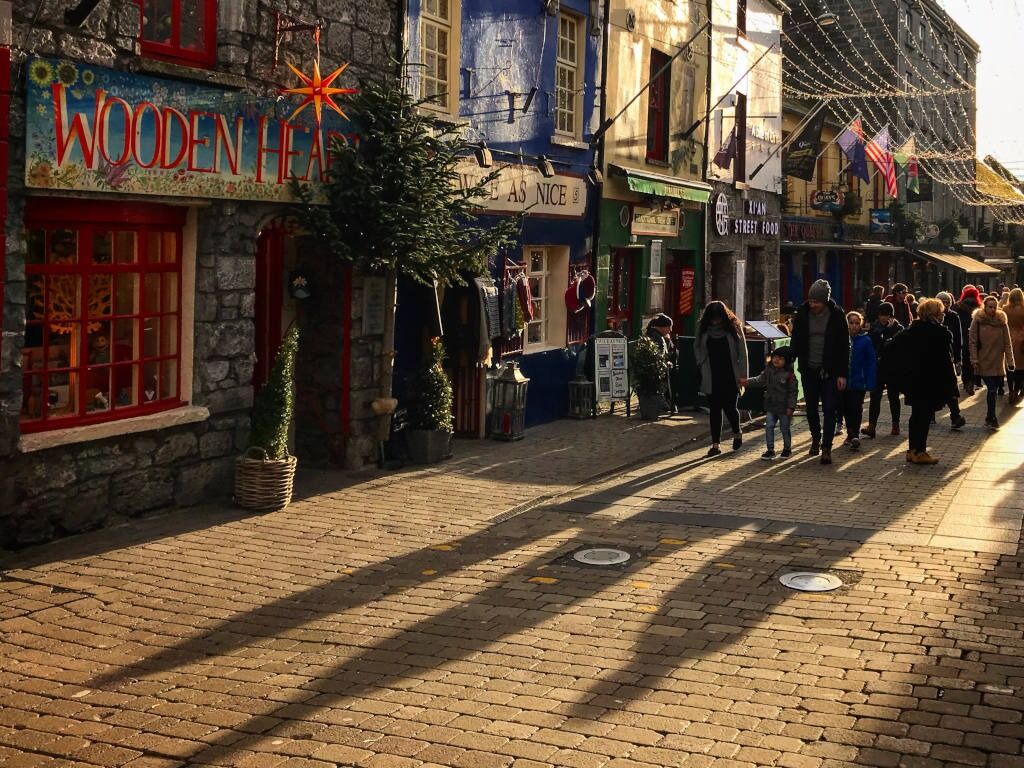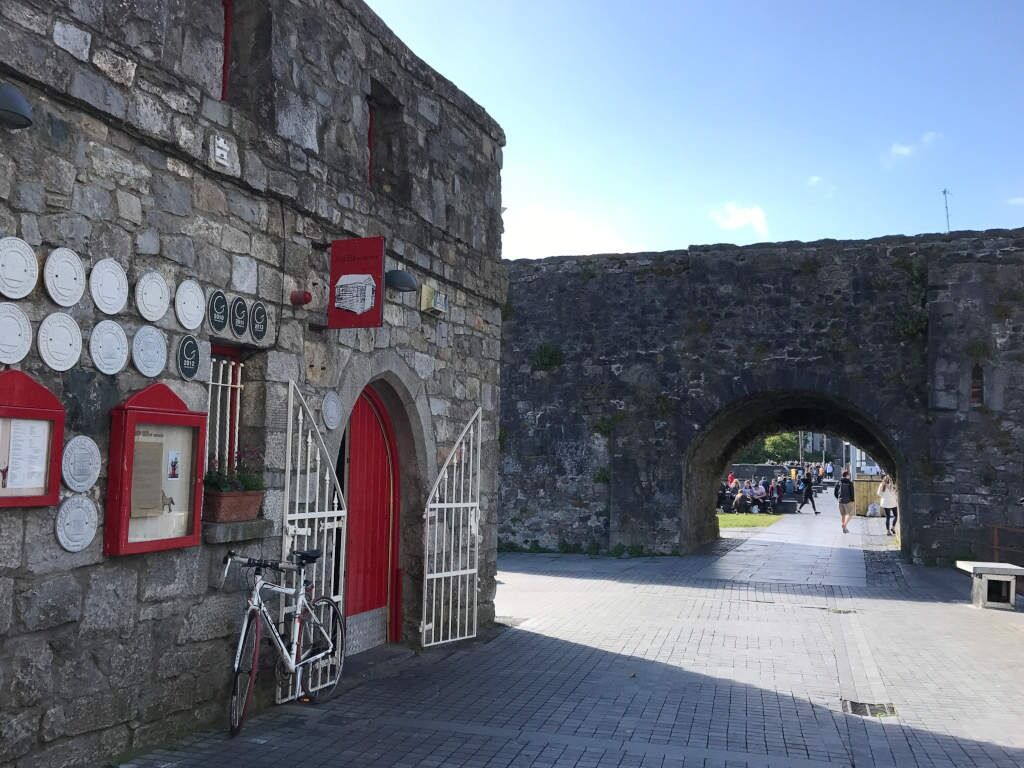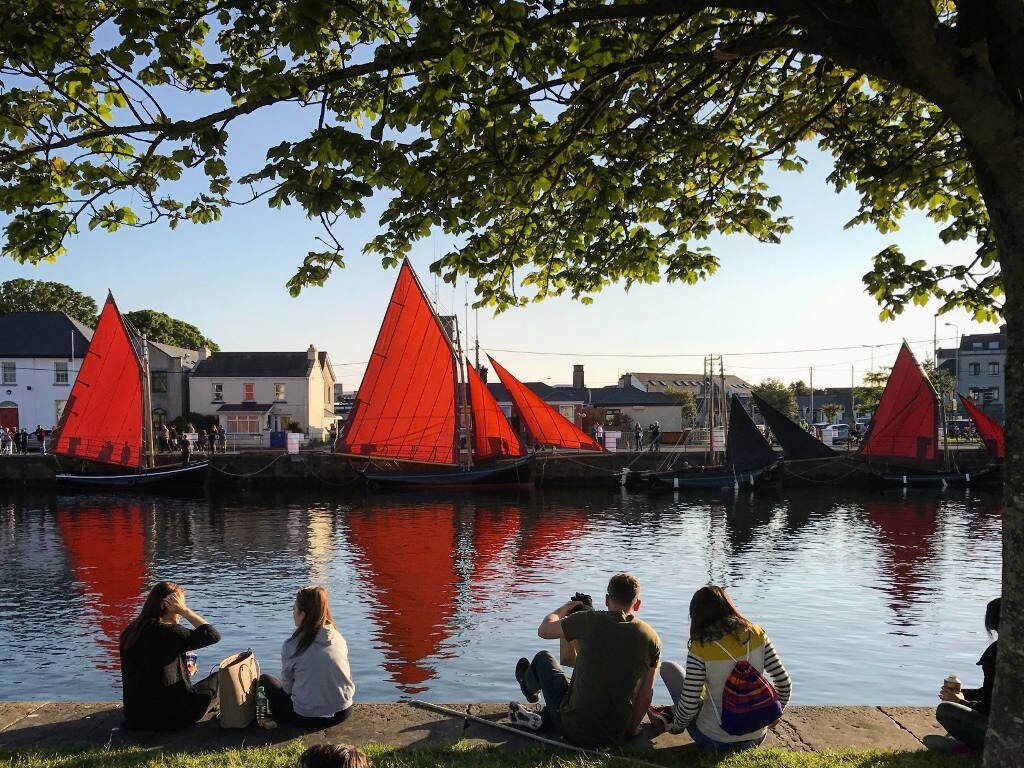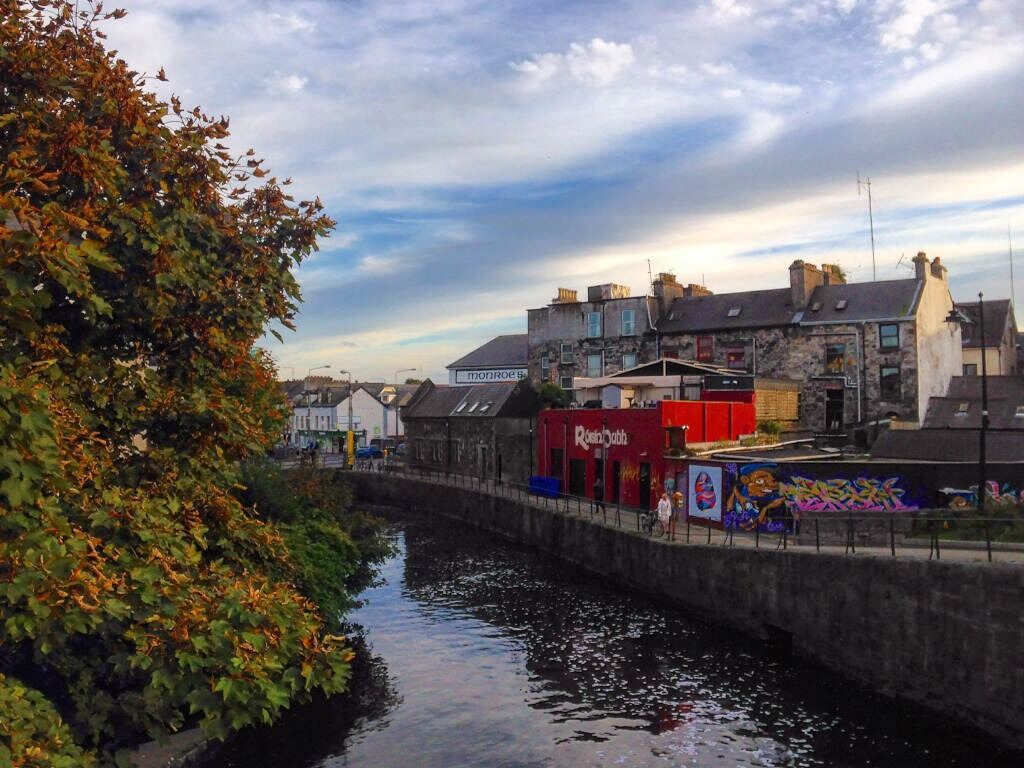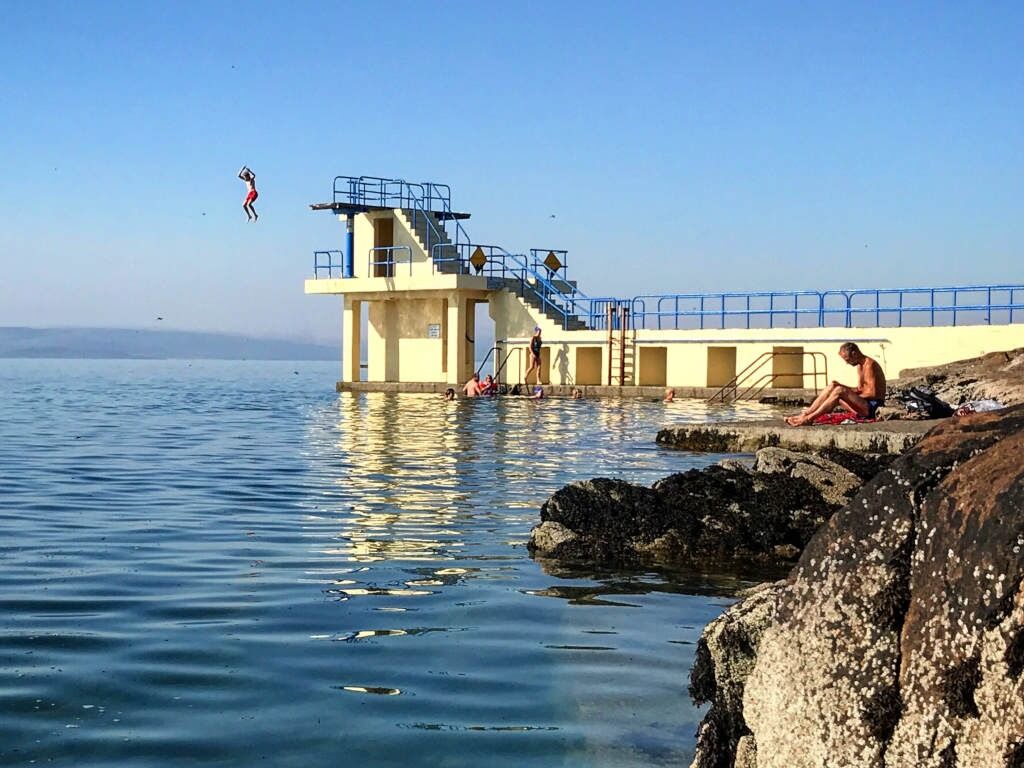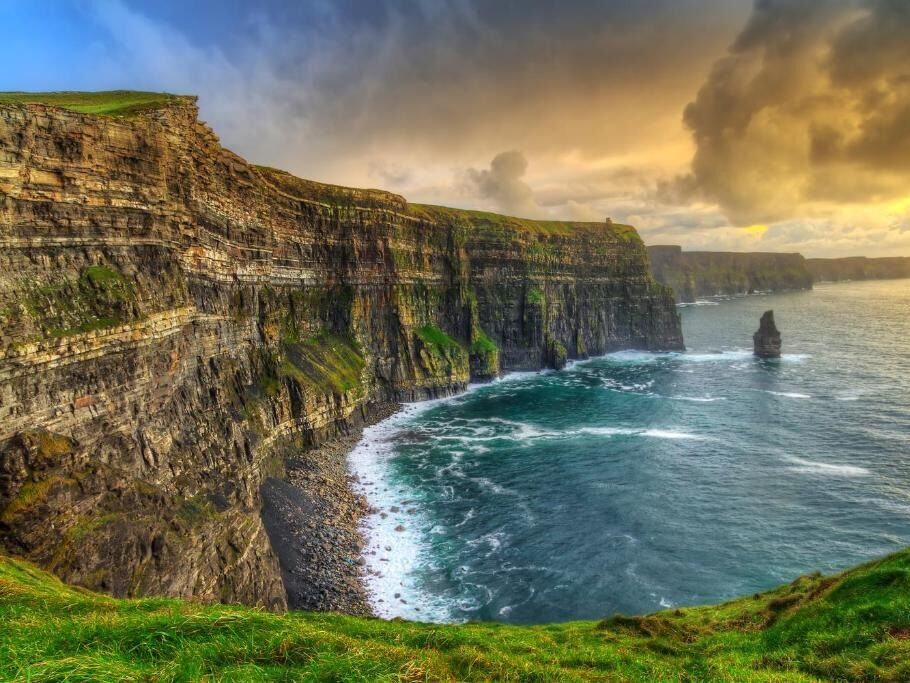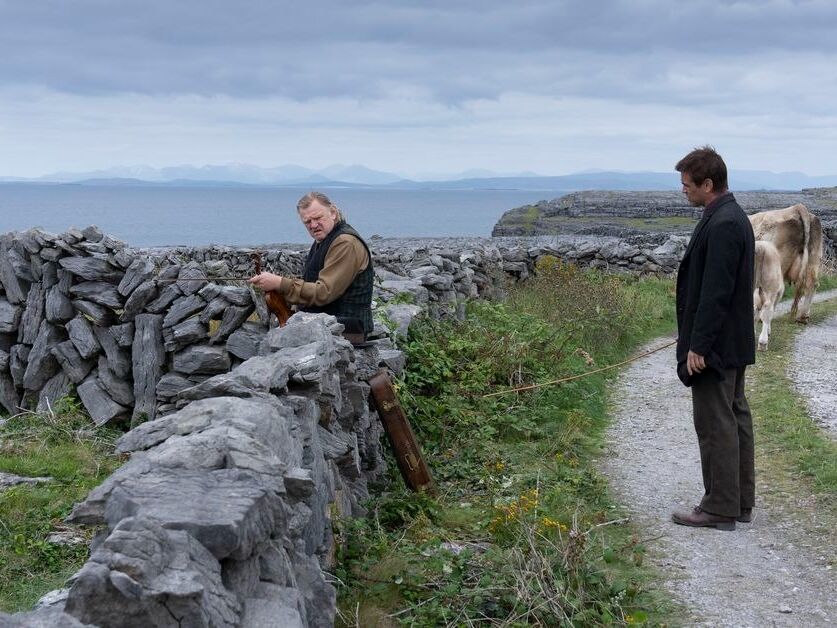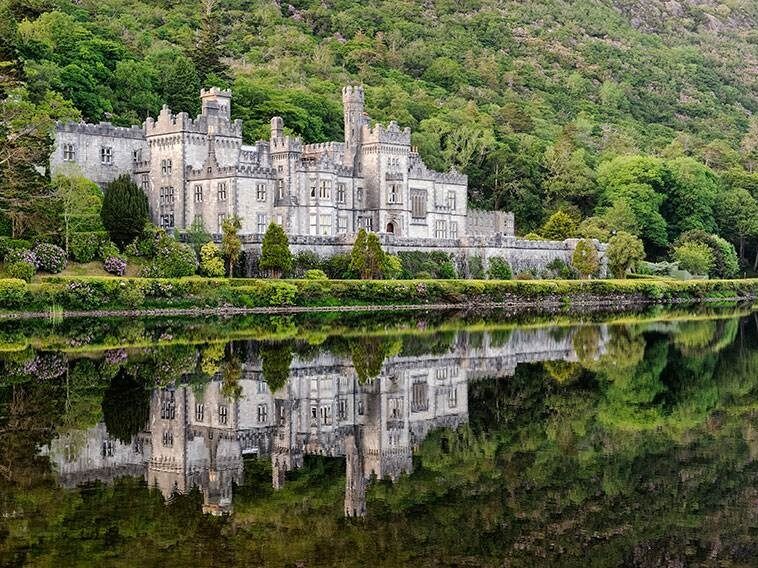
Gemma & James
Gemma & James
Things to Do
Eyre Square
The Square in the Heart of Galway City
Eyre Square (‘An Fhaiche Mhór’ in Irish) in the heart of Galway City, is officially known as the John F. Kennedy Memorial Park. The square has a rich history dating back to medieval times when markets took place on the green in front of the town gates. In 1710, Mayor Edward Eyre officially presented the plot of land to the city. It remains a popular gathering place for visitors and natives alike and the grass areas are often packed on sunny days. There is also a playground here and seasonal markets take place throughout the year. A bust of the US President Kennedy, who was made a Freeman of the city, marks the spot where he made a speech to approximately 100,000 Galway people in 1963, on his last trip before his assassination.
Over the years, the square has undergone a number of name changes and facelifts to become the present square, which received the Irish Landscape Institute Design Award in 2007. There are a number of ornate fixtures in the park, such as the historic Browne family mansion doorway (1627) and the Quincentennial fountain (1984) which is a representation of the Galway Hooker, which is a traditional fishing boat unique to Galway.
Quay Street
The heart of Galway is Quay Street, pumping out a rich blend of ambience, music, food, history, people, and more.
The Latin Quarter
The Latin Quarter of Galway City extends from the Spanish Arch to O’Brien’s Bridge to St Nicholas’ Church to Middle Street and features many well fine examples of the city’s medieval heritage. It is home to many of Galway’s best-known shops, pubs, restaurants and hotels along with historic buildings. All along the short cobblestoned stretch of the road, known as High Street are small, interesting unique shops. Kilkenny Shop has a good range of goods, especially knits and pottery. Galway Woollen Market will sell you the wool to knit your own sweater or jacket.
Spanish Arch
Positioned on the left bank of the Corrib River, The Spanish Arch is one of Galways historical gems, dating back to pre-medieval times.
The Spanish Arch was built in 1584 but is an extension of the 12th century Norman -built town wall, which stretched from Martin’s Tower to the riverbank. It housed soldiers who kept watch and manned cannons on the roof. Constructed by Wylliam Martin, the 34th mayor of Galway, it was first known as Ceann an Bhalla (‘the head of the wall’) but later became known as the Spanish Arch. This misnomer is thought to be a reference to the former merchant trade with Spain and Spanish galleons, which often docked here. In medieval times, European ships carrying cargo of wine and spices sold their goods at the docks. In fact, Christopher Columbus visited in 1477.
In 1755, The Spanish Arch was partially destroyed by a tsunami. In the 1800s, the Eyre family added the Long Walk extension. Until 2006, The Spanish Arch housed the Galway City Museum, which has now moved to a new location 50 yards away behind the original museum building.
The Claddagh
The Claddagh or ‘An Cladach’ meaning ‘the shore’, is a notable area in Galway, on the western side of the city. The Claddagh was once an ancient fishing village, dating from the fifth century. This community, most of whom sold their daily catches at market near the Spanish Arch, lived in thatched cottages. They sailed in the famous Galway Hooker boats and spoke Irish. They even had their own king, who led the fishing fleet and settled disputes in the community.
The West End
Home of great food, music and craic in Galway
If you continue beyond the Latin Quarter and cross either O’Brien’s Bridge or Wolfe Tone Bridge you’ll arrive at the district known as ‘The West End’. The West End is the part of Galway that visitors are delighted to discover. Off the beaten track and a little further out of the centre of the city, its bohemian and eccentric character with friendly locals make it one of the most appealing places in Galway. Family run businesses for generations work alongside new shops, bars, cafes and restaurants getting ready to hand over to the next.
Salthill Prom
The beach at Salthill, along the famous Salthill Promenade is actually several small beaches separated by rocky outcrops running all the way down to Blackrock Diving Tower at its western end. Some of the beaches are sandy and some pebbly. The largest and most popular is Ladies Beach which has its very own beach hut serving coffees, ice-creams and treats. It is located in Galway city and overlooks Galway Bay, a Special Area of Conservation. The beaches are lifeguarded from mid-May to the end of September from 11 am to 7 pm. Salthill beach has been a blue flag beach and enormously popular in fine weather during the summer.
Cliffs of Moher Experience
Encounter a moment of magic as you stand atop these awe-inspiring, rigid cliffs with edges dropping into the untamed Atlantic Ocean. Stretching 8km (5 miles) along the Atlantic coast of County Clare, The Cliffs of Moher stand 700 feet tall. Visitors are welcomed to explore the walking paths along the most outstanding landscape in Ireland. Discover the unique colony of seabirds from the South platform, counting upwards of 30,000 birds from 20 different species!
Aran Islands Tours
Inishmore, the largest of the Aran Islands, is located in Galway Bay and served as the backdrop for the majority of The Banshees of Inisherin, with the cast and crew making it their home for three weeks of filming in 2021.
Another of the Aran Island is Inis Oírr. You’ll be greeted by golden sandy beaches, turquoise water and maybe even the island’s resident dolphin, Dusty! This tranquil collection of fishing villages is also home to a burial mound dating back to 1500 BC, a Medieval Church ruin buried half in the sand, and a 3-story tower built within a Stone Age fort. Among the shore, you’ll encounter a shipwreck from 1960, breathtaking views of Connemara and the Burren, and one of Ireland’s most beautiful beaches. Whichever path you take on the island, you’ll be sure to stumble upon history, traditions and a good cup of tea.
Connemara & Kylemore Abbey
Kylemore Abbey
Extravagantly placed on a lake in the midst of the mountains, this 19th century abbey has was originally built by Mitchell Henry as a gift to his wife, Margaret. Kylemore Abbey provided many improvements to the land after the Great Famine: reclaiming bogland, providing locals with work, shelter and even education. Today, visitors can explore the Abbey (now owned and run by Benedictine nuns), miniature Gothic Church and award winning-walled Victorian walled gardens.
Connemara
Connemara, an area famed for it’s unspoiled natural beauty and rugged landscapes. As you travel from Galway, listen to your expert driver/guide share the origin of the Irish language and how it is still the native language of Connemara, despite its diminishing status in the rest of Ireland. Exit the coach to visit iconic Irish landmarks independently and discover rivers and lakes that flow off The Twelve Pins Mountain Range to naturally shape this majestic region. You’ll surely see reasons why Hollywood directors chose Connemara as backdrops to movies such as The Field (Written by John B. Keane, starring Richard Harris and John Hurt) and most recently, Marley & Me (Starring Owen Wilson and Jennifer Aniston).
